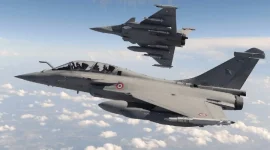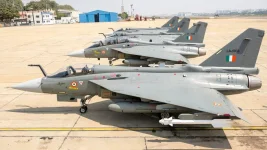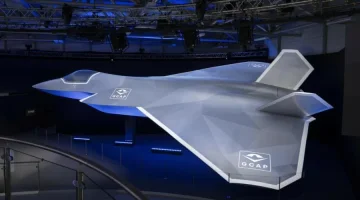- Views: 3K
- Replies: 19
The Indian Air Force (IAF) has set specific and ambitious requirements for a new engine being developed for India's future Advanced Medium Combat Aircraft (AMCA).
The Gas Turbine Research Establishment (GTRE), tasked with this crucial development, must engineer an engine capable of achieving "supercruise" – sustained supersonic flight without engaging fuel-intensive afterburners.
The IAF mandates this capability at a speed of Mach 1.3 (approximately 1,600 km/h) at an altitude of 12 kilometres, requiring a minimum 'dry' thrust of 72 kilonewtons (kN). This directive highlights India's commitment to integrating advanced capabilities into the fifth-generation stealth fighter, aiming to meet global benchmarks.
Supercruise capability offers significant tactical advantages for modern combat aircraft. By flying supersonic without the afterburner, the aircraft consumes less fuel, thereby increasing its operational range and endurance. It also reduces the aircraft's infrared (heat) signature, making it more difficult for enemy sensors to detect and track.
For the AMCA, mastering supercruise is seen as vital for operating effectively in India's challenging security landscape, particularly where high-altitude performance and the ability to penetrate contested airspace with stealth are paramount. Achieving Mach 1.3 sustainably under these conditions would provide the AMCA with a distinct operational advantage.
Developing an engine that meets these specifications presents a significant technological undertaking for GTRE, which has encountered challenges in previous engine projects.
The initial prototypes of the AMCA, currently under development, are planned to be powered by imported General Electric F414 engines. While powerful (rated at 98 kN with afterburner), these engines do not provide the required dry thrust for supercruise.
The IAF's requirement pushes for an indigenous powerplant, likely in the 110 kN overall thrust class, capable of delivering over 75 kN of dry thrust. This effort strongly aligns with India's "Make in India" initiative aimed at fostering self-reliance in critical defence technologies, although collaboration with international engine manufacturers like Safran or Rolls-Royce remains a potential route to expedite development.
Supercruise in Global Fifth-Generation Aircraft
While often associated with fifth-generation fighters, the implementation of supercruise varies among the world's most advanced jets:- Lockheed Martin F-22 Raptor (USA): Considered the benchmark, the F-22 excels at supercruise, capable of sustained speeds exceeding Mach 1.5 without afterburners, powered by its potent Pratt & Whitney F119 engines. This capability was central to its design for air dominance.
- Lockheed Martin F-35 Lightning II (USA): In contrast, the F-35 prioritizes stealth, advanced sensors, and multi-role flexibility over supercruise. Its single Pratt & Whitney F135 engine allows brief supersonic bursts without afterburner but not sustained flight, reflecting a different design philosophy.
- Sukhoi Su-57 (Russia): Russia's Su-57 is reported to achieve supercruise around Mach 1.3 with its current AL-41F1 engines, with future engines planned to enhance this further. It emphasizes speed and maneuverability alongside stealth features.
- Chengdu J-20 (China): The J-20's supercruise capability is less clear. While later versions with indigenous WS-10C engines may offer limited supercruise, it is widely believed that the full capability awaits the operational deployment of the more powerful WS-15 engine.
A Prized, But Not Universal, Capability
The global landscape shows that supercruise is a highly valued feature, particularly for air superiority roles like that envisioned for the F-22 and Su-57, allowing rapid interception and engagement. However, it is not deemed essential for all fifth-generation missions, as demonstrated by the F-35's design choices favouring other attributes.For the Indian AMCA, the IAF's requirement for supercruise underscores its intended role as a potent air dominance fighter, complementing its stealth design and advanced sensor suite.
However, achieving the specific target of Mach 1.3 with 72 kN dry thrust at high altitude is a demanding goal, potentially requiring an engine with significantly higher dry thrust than initially anticipated, which could influence the aircraft's overall design, weight, and stealth characteristics – a complex balance for GTRE and the AMCA program to achieve.



